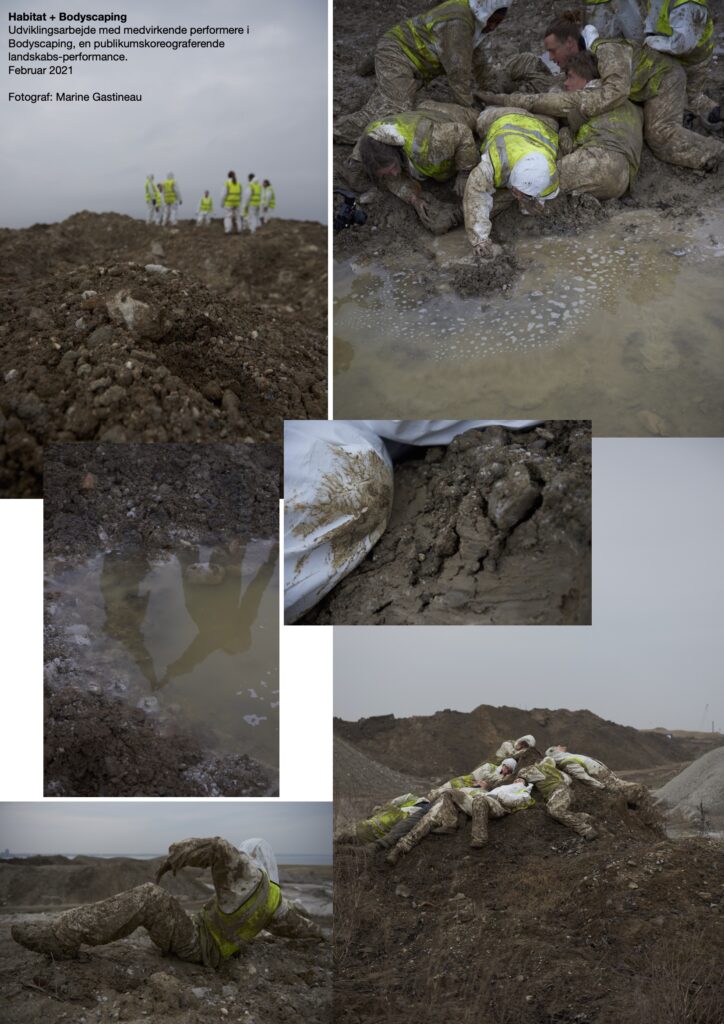Bodyscaping (2021) is a project by Nana Francisca Schottländer. I was invited as a guide/performer to develop a performative walk in cooperation with Nana and five other guides/performers in Jorddepotet (The Earth Depot), Nordhavn, Copenhagen. Consulted by Tora Balslev. Produced by Metropolis.
The other guides performers are: Louisa Yaa Aisin, Sarah Lee Armstrong, Maja Ejr, Mikkel Mallow, Thomas Smith.

Nana writes about the project:
Som opretstående væsner går vi på jorden; kun vagt føler vi ekkoet af de bølger og impulser, der genindskriver os i en større, materiel cirkulation.
(As upright beings we walk the earth; only vaguely do we feel the echo of the waves and impulses that re-enroll us in a larger, material circulation.)
Nana continues:
The exhibition HABITAT and the associated landscape performance BODYSCAPING is a continuation of my exploration of the impact that the human body and a concrete landscape have on each other – expressed in images, video, sound and installation. Where I have previously entered into dialogue with landscapes around the Wadden Sea (with views at the Wadden Sea Center and Slotfeltladen), Thy (with solo exhibition and performance at the newly opened SMK Thy), and Silkeborg (with solo exhibition and performances at KunstCentret Silkeborg Bad), the exploration applies this time the man-made landscape, Jorddepotet (The Earth Depot).
The landfill is the outermost part of Copenhagen’s North Harbor, where surplus soil from excavated foundations, metro tunnels and contaminated plots is unloaded and creates new land. The landfill is a landscape in constant change, a dynamic choreography between people, machines, and everything that spontaneously comes to life here. Species move in. Birds stop and hatch. Plants in bizarre mixtures emerge from seeds brought together from vastly different places. Insects find their way across. Snails and frogs mysteriously appear in the more or less polluted reservoirs of salt and rainwater. Fishermen move in along the bulwark and people begin to explore the area. But only after dawn and on weekends. The rest of the time, development plans, excavators and trucks rule, while the landscape emerges in forms that are slowly beginning to define who will live here and how… In the long term, the area will be transformed into a container port and recreational areas. In the longer term, construction is likely to mature and be converted into housing. But right now it is there – after 8-9 years of filling – in an area that was previously sea. A semi-toxic country of the future, where scrapes from the abdomen of the city body are deposited and relocated. A borderland filled with tangled tales of past lives – a starting point for new lives.